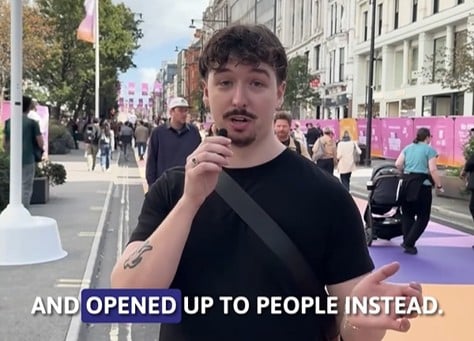

Putting local authorities in the driving seat. How Micromobility Planner is reshaping shared transport.
In cities around the world, shared micromobility, such as dockless e-bikes and e-scooters, is emerging as a vital piece of the urban mobility puzzle. But too often, the rollout of these schemes is reactive rather than strategic.
We started to look at how we could help local authorities and urban planners take control of shared micromobility schemes. Rather than waiting for operators to knock on the door, cities can now proactively plan where these schemes will work best – plugging transport gaps, supporting decarbonisation goals and improving public realm outcomes.
From complex GIS models to click-and-go insights
Originally born from the world of site suitability analysis in GIS, Micromobility Planner began life as a highly technical process – layering complex datasets to model demand hotspots for micromobility hubs.
But as we worked with more clients, we saw the need for a simpler, more accessible solution.
The result? A powerful, intuitive tool that delivers insights in seconds, No GIS expertise is required and what used to take days of processing and formatting can now be done in a few clicks. The tool maps factors like population density, connectivity gaps and existing infrastructure to reveal optimal locations for parking bays and vehicle deployment.
Case study: Mississauga leads the way
One standout project was for the City of Mississauga, just west of Toronto. Faced with growing interest from e-bike and e-scooter operators, the city chose not to simply react. Instead, they partnered with Momentum and Spatial Design Hub to take a plan-led approach, shaping their shared scheme based on community needs, not just commercial offers.
This approach not only ensured better infrastructure planning, such as dedicated parking, but also helped avoid the pitfalls of poorly-managed schemes, like pavement clutter and inconsistent service.
Empowering local authorities
One of the most exciting aspects of Micromobility Planner is how it empowers local authorities. With quick, data-driven insights at their fingertips, cities can engage confidently with private operators, aligning schemes with public policy goals rather than purely commercial incentives.
Where operators may push for vehicle locations that maximise profits, authorities using the tool can prioritise transport equity – ensuring underserved communities gain access and encouraging mode shift away from cars.
The broader challenge: infrastructure, investment and acceptance
While Micromobility Planner addresses one critical part of the puzzle – where to place vehicles and parking – it also sits within a broader context. For shared micromobility to succeed long-term, it needs to be supported by the right infrastructure: safe cycle lanes, intuitive parking and consistent design standards.
As seen in central London boroughs like Camden, dedicated parking bays (which can even be just a painted box) can make a big difference. By integrating micromobility into the streetscape and reducing clutter, small changes such as this can make schemes more acceptable to residents and businesses.
Wider systemic questions also remain. Should privately-operated micromobility schemes receive public support, like their docked counterparts (eg Santander Cycles in London)? How do we encourage everyday use beyond weekend leisure trips? And how do we plan for longevity in a sector that’s seen operators rise and fall rapidly?
What’s next?
As shared micromobility continues to evolve, tools like Micromobility Planner are essential for putting public interest first. By combining cutting-edge data modelling with user-friendly design, we can help cities make smart, evidence-based decisions – whether they’re just starting their micromobility journey or refining an existing scheme.
Because in the end, the goal isn’t just more scooters on our streets. It’s a better, cleaner, more connected city for everyone.


